“I’m particularly interested in how pedagogy and learning space design can interact to create dynamic learning environments that engage students.” Hayball Studio Director Fiona Young is a tour de force in the Asia Pac design community.
Fiona Young: Architecture wasn’t something I had actually considered until I was approached one day by my sixth form geography teacher who asked if I’d ever considered architecture. Until that point, I’d always thought I’d be an optometrist or a surveyor (in France!) but after a stint of work experience with an architecture practice, I knew that’s what I wanted to do.

Our Lady of the Assumption Catholic Primary School, a project Fiona worked on with BVN. Photography by John Gollings
I have a rather niche background in architecture, having worked in the museum sector on exhibition design. This has given me a unique perspective towards bridging the thinking between learning environments and exhibitions, and I’m particularly interested in how pedagogy and learning space design can interact to create dynamic learning environments that engage students, both today and in the future.
Exhibition design is centred on a deep understanding of the objects and artefacts that are being displayed, and the stories the curators wish to tell. In a lot of ways, educational design is similar, simply replacing objects and stories with pedagogy and culture, which are inherent to the fabric of the build and the experience of the students and teachers. You need to be able to understand the potential for how students learn – now and into the future – to ensure you’re creating a space that enables possibilities for learning.
As the population of our major cities continues to grow and spatial constraints tighten, finding ways to design schools to allow for a growing student population while creating ways to connect these schools to their communities becomes vitally important.
One such innovative idea is to create precincts with schools at the centre that incorporate facilities such as libraries, art galleries and recreational facilities. By connecting schools with community spaces, it relieves the pressure on developers to build entire school facilities from scratch and makes for a richer, more vibrant community. It also invites students to engage more with, and prepare for the real world, tapping into students’ potential by connecting them with more entrepreneurial and authentic learning experiences.
Population density is not a new issue, and a number of cities around the world, such as New York and Hong Kong, have already embraced vertical schools and their urban environments to cater to growing student numbers and less space. In Australia, Hayball is currently in the construction phase of Victoria’s first vertical school, South Melbourne Primary School, which aims to futureproof the educational needs of one of Melbourne’s largest urban renewal areas. Incorporating learning facilities for students, the school will also house a community centre for local residents to engrain the school within its locale, while also connecting with nearby libraries and other facilities to broaden the scope of learning spaces.
–
We think you’d like to check out Hayball Sydney’s new studio. And get regular updates, join our digital community and get our weekly design newsletters.
INDESIGN is on instagram
Follow @indesignlive
A searchable and comprehensive guide for specifying leading products and their suppliers
Keep up to date with the latest and greatest from our industry BFF's!

A longstanding partnership turns a historic city into a hub for emerging talent
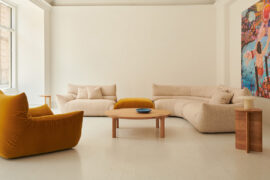
A curated exhibition in Frederiksstaden captures the spirit of Australian design

The undeniable thread connecting Herman Miller and Knoll’s design legacies across the decades now finds its profound physical embodiment at MillerKnoll’s new Design Yard Archives.

For Aidan Mawhinney, the secret ingredient to Living Edge’s success “comes down to people, product and place.” As the brand celebrates a significant 25-year milestone, it’s that commitment to authentic, sustainable design – and the people behind it all – that continues to anchor its legacy.
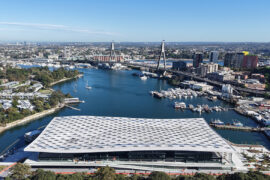
With a date now set for January 2026, Sydney’s landmark project is taking shape as a significant and welcome addition to civic life in the city.

With experience across fashion, styling and interiors, Nicholas Gilbert launches Studio Nicholas with a mission to elevate Australian design on the world stage — and to champion a more rigorous, professional future for the industry.
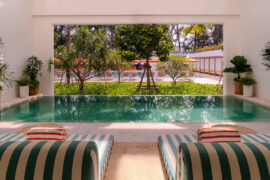
Opening in October 2025, The Standard, Pattaya Na Jomtien brings together ONION, DIN Studio, Studio Lupine and Verena Haller to create a sculptural modernist retreat where art, architecture and coastal culture meet.
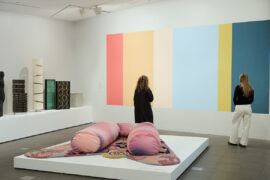
At the NGV’s Making Good: Redesigning the Everyday, design becomes a force for repair. From algae-based vinyl to mycelium earplugs, the exhibition proves that rethinking the ordinary can reshape our collective future.
The internet never sleeps! Here's the stuff you might have missed
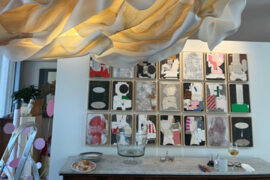
Held in a private Melbourne residence, Fletcher Arts’ annual exhibition unites over 30 Australian artists and designers in a setting where art meets architecture.
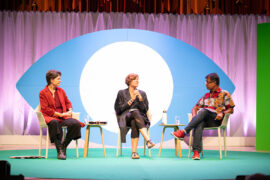
At the World Design Congress in London, a simple idea threaded through two dense days: design is not an island. It moves inside wider systems of economics, policy, finance and ecology.

Annabelle Smith has been named winner of The Graduate at the INDE.Awards 2025, in partnership with Colorbond. Her visionary project reimagines housing in Aotearoa, proposing a modular and culturally responsive model uniting people, architecture and nature.
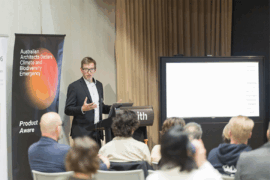
In a landscape clouded by data and greenwash, Product Aware offers architects and designers a common language for sustainability. Embraced by suppliers – including Milliken – it is setting a new benchmark for trust and bringing clarity and accountability to material specification.